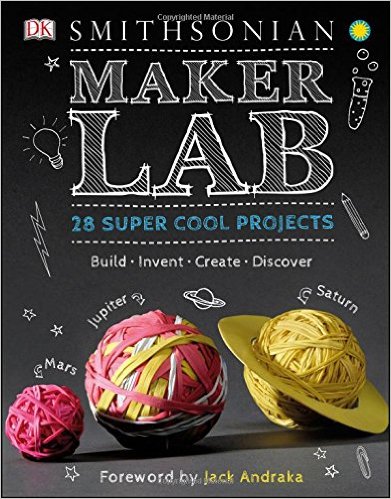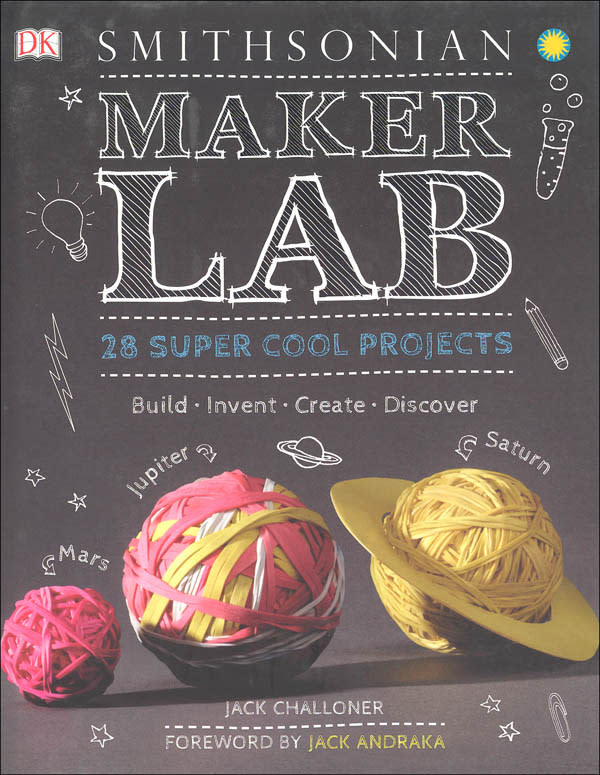DK Smithsonian Maker Lab: 28 Super Cool Projects teaches science concepts under the disguise of fun activities. This 160-page, hardcover book features detailed illustrations and step-by-step instructions for each activity, concluding each with a “How It Works” section explaining the scientific principles children will have observed.
The 28 activities are presented in four sections. The first section, “Food for Thought,” uses items from the kitchen cupboard and refrigerator that are used to make slime, invisible ink, Baked Alaska, monster marshmallows, sugar crystal lollipops, and a lemon battery.
“Around the Home,” the second section, seems to be a catch-all category that includes making a DNA model, paper airplanes (three variations), speakers that work with a mobile phone, rubber band planets, a kaleidoscope, a balloon rocket car, a bridge made of craft sticks, a “dancing snake,” and a breathing machine.
The third section, “Water World,” includes making a density tower, a waterwheel, a soap-powered boat, a water filter, a stalactite, bath fizzies, and a colorful icy orb.
Part four shifts to “The Great Outdoors” as children create a jungle in a bottle, fossils, a plant grown within a shoebox maze, sun prints, a volcano, and wind catchers.
As you might have guessed, activities vary in difficulty and time required. Some activities will require a week or more for processes such as plant growth and stalactite formation. On the first page of each activity it shows time required and the level of difficulty. For example, the dancing snake made with a balloon and tissue paper is shown as an easy activity that takes only 15 minutes while bridge building is one of the most difficult activities, and it requires about two hours. There are just a few activities labeled as either easy or hard; most activities are moderately difficult. While children in the primary grades should be able to do the easy activities, most of the projects will be best for students in about third through seventh grade.
Some activities require special resources such as colored beads for the kaleidoscope, a sizeable collection of rubber bands of particular colors for the planets, and electrical wires with clips for the lemon battery. The majority of resources you will need will likely be found around the house or can be easily obtained.
While some of the activities are likely already familiar to you, the author often adds an extra twist to make them more interesting. For example, his variations on the basic paper airplane include an additional suggestion for experimenting with a tailfin to make the plane circle in a particular direction.
While there are many other experiment and activity books, what sets this apart is the beautiful and thorough presentation. The colorful illustrations are both decorative and helpful. The illustrated steps for each activity make it easy to see what needs to be done and what it should look like. In addition, the science explanations at the end of each activity include a small photo and explanation of a real-life application of the principle. These sections add significant educational value. Other activity books generally have some but not all of these features.









